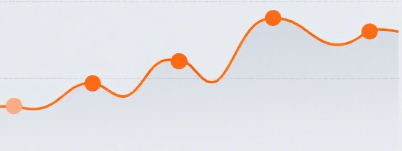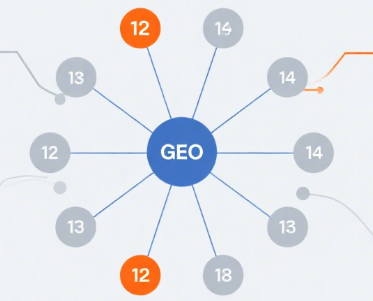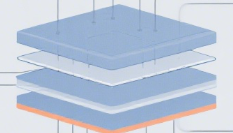1. Conclusion First
Thecore goal of GEO (Generative Engine Optimization) is to make your content more frequently cited, higher in position, and more cited in the final answer of "Generative Search/Q&A". Instead of piling up keywords, write the content as "factual units that can be directly extracted and verified by AI": short sentences, clear caliber (time/version/range), key numbers, authoritative sources, plus structured lists, tables, and Q&A.
2. What is GEO
- definition: GEO is a content optimization method for generative engines. The generative engine retrieves multi-source materials, uses large models to synthesize answers, and marks the cited sources in the answers.
- Goal: Optimize visibility such as "citations, appearances, and cited word count" rather than just pursuing blue link rankings for traditional searches.
- Basis: The academic community has proposed systematic frameworks and evaluations (such as GEO-bench), and the industry is also verifying the value of "citation-oriented" writing to improve visibility.
3. Why GEO
- user behavior changes are needed now: More and more queries are directly summarized by AI, and links are clicked down.
- Presentation style changes: The answer area cites several sources, and the attention of the first screen is occupied by a small number of "citable facts".
- Creators' demands: A new path to "being seen" is needed - from "ranking" to "being cited".
4. How the generation engine "picks and cites"
- can be verified: numbers have units, conclusions have calibers, and sources can be traced.
- Slicable: Lists, tables, and Q&A are easier to extract and assemble by models.
- Readability: Short sentences, clear subject-verb, reduce redundancy.
- Stability: Has a "Recently Updated" tag and changelog to reduce the risk of obsolescence.
5. Whether the three major indicators of GEO
- are cited: whether the page enters the citation list in the answer area.
- Citation position: The further forward, the better, pay attention to the visibility above the fold.
- Quoted word count: What percentage of your text makes up the final answer.
6. Executable Writing SOP
- Structure Template
- Summary Quick Fact: 3–5 key points, including at least one number and a time window.
- Fact cards: 5–10 articles, each one saying only one thing, and the caliber (version/region/time) is clearly written.
- direct quote: 1–2 authoritative original words, indicating the source subject and date (text without link).
- Key statistics: price, quota, performance, timeline, presented as a list or table.
- Q&A: 6–12 asks, covering "how to do it, restrictions, costs, common pitfalls".
- Changelog: Date + Changepoint, accumulated over time.
- Writing rules < li class="ql-indent-1"> short sentences are preferred, adjectives and long paragraphs are avoided.
- first appeared term to give a popular definition.
- the number should have a unit and caliber; The conclusion comes first, the argument follows.
- the main text does not put links and corner tags, and all sources are listed at the end of the article.
- Expression paradigm example
- Fact: In August 2025, the X feature will be available to all users. Caliber: Version X.Y, available worldwide, free tier required.
- Facts: The pricing is adjusted from A to B, and the annual payment discount is C%, effective from D. Caliber: Except for the Enterprise version.
- Fact: In the E scenario, tool X has about a % lower latency than tool Z. Caliber: same region, same request scale.
7. Common content types and best writing
- News categories (200–350 words): Complete four elements - time, version, change, and impact object.
- Operation guide (600–1200 words): step-by-step, 50–100 words per step, action + result + checkpoint.
- Comparison selection (500–1000 words): Give a conclusion first, then a comparison table (price, quota, limits, licensing, update frequency).
- Long-tail Q&A (100–250 words/Q): Facing real questions, short questions and short answers, avoiding empty words.
8. Common misunderstandings
- Keyword piling: limited help for GEO, affecting readability and slicability.
- Empty language marketing: Without numbers and caliber, the model is difficult to accept and quote.
- Long article: The information density is low and cannot be sliced, so it should be changed to a list and table.
- Image only: Key information must fall into parsable text.
- Ambiguous source: only write "officially said" without writing the subject and date, low credibility.
9. Measurement and Review
- Sampling Problem Set: Select 50-100 real questions related to your field, covering information, methods, and comparisons.
- Record three indicators: whether it is cited, where it is cited, and the proportion of cited words.
- A/B comparison: Compare the same page before and after GEO rewriting, and keep screenshots and key points.
- Iterative strategy: Prioritize optimizing content that is highly relevant but currently rarely cited. Downgrade the maintenance frequency for persistently unreferenced topics.
- Risks and boundaries: Keep sources in compliant citations; Clarify the time window and version to prevent misleading outdated information.
10. 30-Day Introductory Plan
- Days 1-7: Select key topics, collect authoritative sources, and complete the numbers and calibers required for the fact card.
- Days 8–20: Batch rewrite and publish according to the template to ensure a uniform style of "short sentences + caliber + citations + statistics".
- Days 21–30: Do sample evaluation and A/B review, precipitate common sentence patterns and high hit dimensions, and expand to more topics.
11. Q&A Block
Q1: Will GEO replace SEO?
A1: No. GEO focuses on "being cited" and SEO focuses on "being clicked". The two have different goals but do not conflict, and can be built in parallel.
Q2: Do I have to write a long article?
A2: No, you don't. Newsletters and Q&A short texts are more likely to be sliced and referenced; Contrast and trend essays can be controlled at 500–2000 words.
Q3: What if there is no authoritative source?
A3: Provide reproducible experiments and clear calibers, marked with "self-test"; Subsequently, complete the official or paper and upgrade.
Q4: Do I need to do structured data?
A4: It is recommended to keep basic structured data such as FAQPage, Article, and Breadcrumb, taking into account SEO and analysis-friendliness.
Q5: How can I reduce the risk of outdated information?
A5: Write the time window and version for each fact; The page keeps "Recently Updated" with the changelog; Regularly check back high-traffic content.




